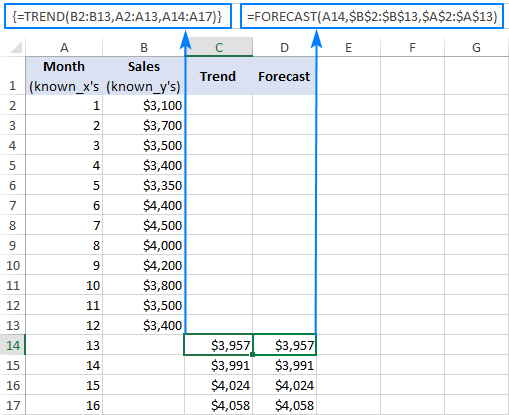

Then, anytime TLEq is empty, line 4 errors because it cannot carry out the CDbl(Mid()) an empty TLEq. The issue begins in line 2 where TLEq is inconsistently left blank during the loop some iterations all the trendline equation are extracted, sometimes only some are, and other times no equations are extracted. There has been no issues with graphing, trendlines showing up, or trendline equations displaying. In lines above these (not included), the series are added, trendlines inserted, and DisplayEquation is called for each trendline.

The CDbl(Mid()) is used to trim TLEq to just the slope and convert to a Double. In our example, the first column (A) contains values of x, whereas the second. TLEq is a string to temporarily hold the full text of the trendline equation (intercept set to 0 so simple y = mx equation). SelectedSheets is an array filled with the sheets the user selects to be analyzed from a multi-select userform listbox. ModulusArr(j) = CDbl(Mid(TLEq, 4, Len(TLEq) - 4)) I want to report the slope average of all the trendlines and I've written the code below to do this action: For j = 1 To UBound(SelectedSheets) I've had success with everything except extracting the trendline slopes.
When x is equal to zero, the average value of y is 2.401163.īy using the LINEST function, we were able to find the equation of the trendline without creating any graph.I'm currently making a macro to extract raw data from multiple csvs, print it in different sheets, trim extraneous data, plot data from each sheet on a single graph with individual trendlines, and report some information for said trendlines and data. A one-unit increase in x is associated with an average increase of 0.552326 in y. Using these two values, we can write the trendline equation for this dataset: The first value in the output represents the slope of the trendline and the second value represents the intercept of the trendline. The following screenshot shows how to use this formula in practice: We can type the following formula into cell D2 to find the trendline equation: =LINEST( B2:B14, A2:A14) Now suppose that we would like to find a trendline equation that summarizes the relationship between these two variables. Suppose we have the following dataset in Excel: Example: How to Find Trendline Equation Without Chart in Excel The following example shows how to use the LINEST function in practice in Excel to find a trendline equation for two variables. 
This function produces a value for both the intercept and slope of the trendline.
known_y’s: A column of values for the predictor variable. known_x’s: A column of values for the response variable. However, a faster way to find a trendline equation without creating a chart is by using the LINEST() function in Excel, which uses the following syntax: One way to find a trendline equation in Excel is to create a scatter plot and then insert a trendline into the chart:







 0 kommentar(er)
0 kommentar(er)
